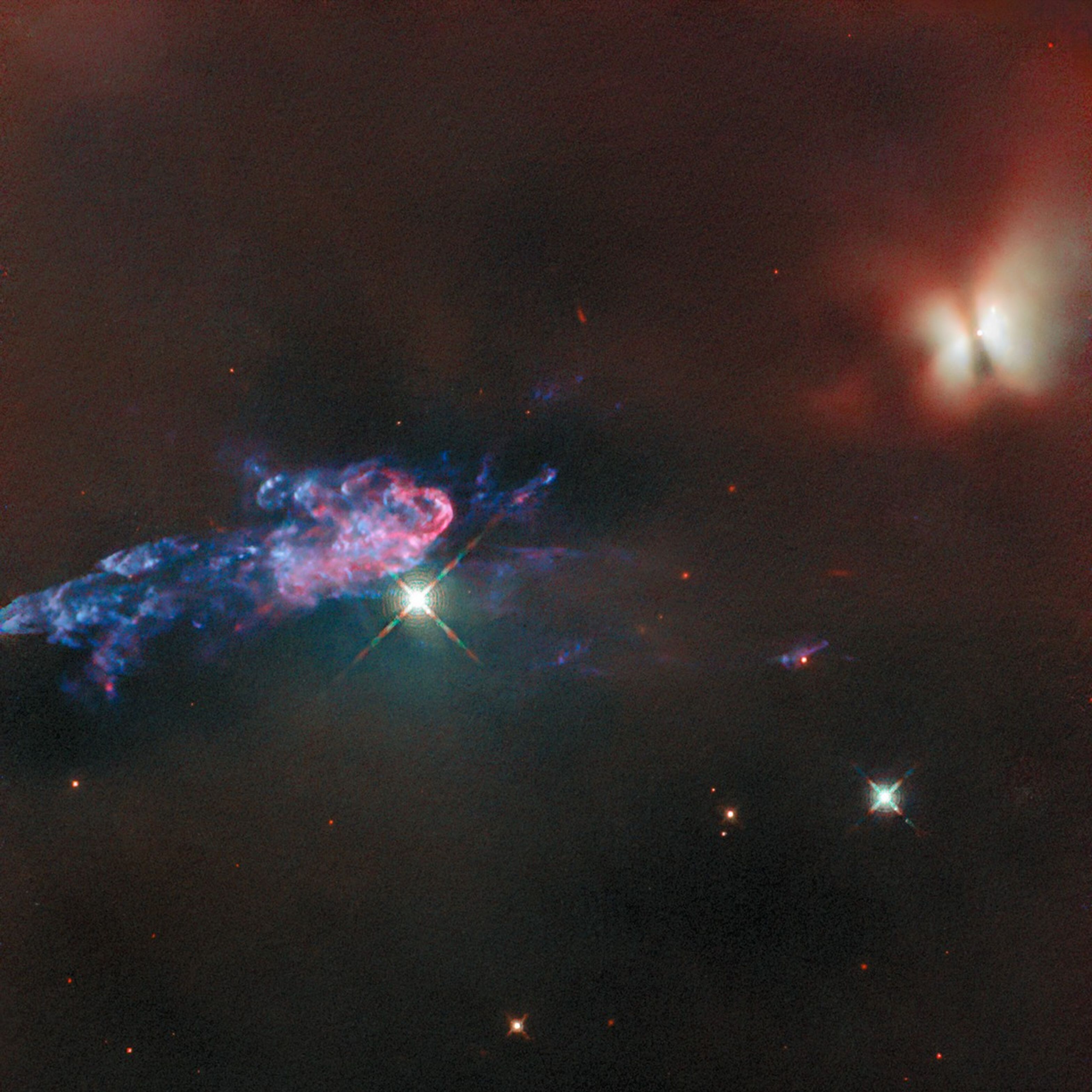Astronomers have used NASA’s Hubble Space Telescope to take the most detailed edge on picture to date of a large disk of gas and dust encircling the 20 million-year-old star Beta Pictoris.
Beta Pictoris is the only star to date where astronomers have detected an embedded giant planet in a directly-imaged debris disk. The planet, which was discovered in 2009, goes around the star once every 18 to 20 years. This allows scientists to study in a comparably short time how a large planet distorts the massive gas and dust encircling the star. These observations should yield new insights into how planets are born around young stars.
The new visible-light Hubble image traces the disk to within about 650 million miles of the star. The giant planet orbits at 900 million miles, and was directly imaged in infrared light by the European Southern Observatory’s Very Large Telescope six years ago.
“Some computer simulations predicted a complicated structure for the inner disk due to the gravitational pull by the giant planet. The new images reveal the inner disk and confirm the predicted structures. This finding validates models that will help us to deduce the presence of other exoplanets in other disks,” said Daniel Apai of the University of Arizona, Tucson. These structures include a warp in the inner disk caused by the giant planet.
When comparing the latest 2012 images to Hubble images taken in 1997, astronomers find that the disk’s dust distribution has barely changed over 15 years despite the fact that the entire structure is orbiting the star like a carousel. This means the disk’s structure is smooth and continuous, at least over the interval between the Hubble observations.
In 1984 Beta Pictoris was the very first star discovered to be surrounded by a bright disk of dust and debris. Since then, Beta Pictoris has been an object of intense scrutiny with Hubble and ground-based telescopes.
The disk is easily seen because of its edge-on angle, and is especially bright due to a very large amount of starlight-scattering dust. What’s more, Beta Pictoris is 63 light-years away, closer to Earth than most of the other known disk systems.
Though nearly all of the approximately two-dozen known light-scattering circumstellar disks have been viewed by Hubble to date, Beta Pictoris is the first and best example of what a young planetary system looks like.
For one thing, the Beta Pictoris disk is exceptionally dusty. This may be due to recent major collisions among unseen planet and asteroid-sized objects embedded within the disk. In particular, a bright lobe of dust and gas on the southwestern side of the disk may be the result of the pulverization of a Mars-sized object in a giant collision.
Both the 1997 and 2012 images were taken in visible light with Hubble’s Space Telescope Imaging Spectrograph in its coronagraphic imaging mode. A coronagraph blocks out the glare of the central star so that the disk can be seen.
The Hubble Space Telescope is a project of international cooperation between NASA and ESA (European Space Agency). NASA’s Goddard Space Flight Center in Greenbelt, Maryland, manages the telescope. The Space Telescope Science Institute (STScI) in Baltimore conducts Hubble science operations. STScI is operated for NASA by the Association of Universities for Research in Astronomy, Inc., in Washington.
For images and more information about the Hubble Space Telescope, visit:
http://hubblesite.org/news/2015/06
Contacts:
Ray Villard
Space Telescope Science Institute, Baltimore
410-338-4514
villard@stsci.edu





























